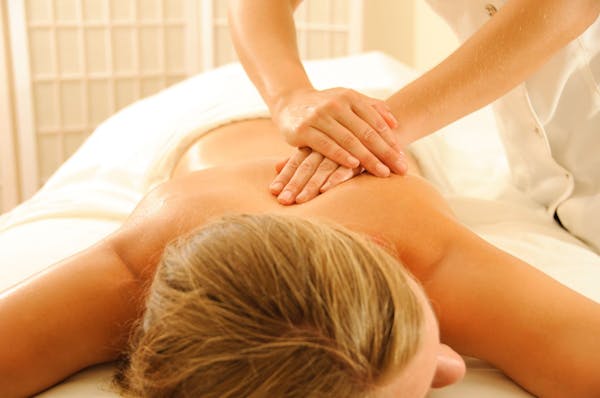
Massage therapy encompasses many different techniques. In general, therapists press, rub, and otherwise manipulate the muscles and other soft tissues of the body. They most often use their hands and fingers, but may use their forearms, elbows, or feet.
The term “massage therapy” includes many techniques and the type of massage given usually depends on your needs and physical condition.
- Massage therapy dates back thousands of years. References to massage appear in ancient writings from China, Japan, India, and Egypt. In general, massage therapists work on muscle and other soft tissue to help you feel better.
- In Swedish massage, the therapist uses long strokes, kneading, deep circular movements, vibration, and tapping.
- Sports massage combines techniques of Swedish massage and deep tissue massage to release chronic muscle tension. It’s adapted to the needs of athletes.
- Myofascial trigger point therapy focuses on trigger points—areas that are painful when pressed and are associated with pain elsewhere in the body.
- Massage therapy is sometimes done using essential oils as a form of aromatherapy.
What the Science Says About the Effectiveness of Massage
A lot of the scientific research on massage therapy is preliminary or conflicting, but much of the evidence points toward beneficial effects on pain and other symptoms associated with a number of different conditions. Much of the evidence suggests that these effects are short term and that people need to keep getting massages for the benefits to continue.
Researchers have studied the effects of massage for many conditions. Some that they have studied more extensively are the following:
Massage for Pain
- A 2008 research review and 2011 NCCIH-funded clinical trial concluded that massage may be useful for chronic low-back pain.
- Massage may help with chronic neck pain
- Massage may help with pain due to osteoarthritis of the knee
- Studies suggest that for women in labor, massage provided some pain relief and increased their satisfaction with other forms of pain relief, but the evidence isn’t strong.
Massage for Fibromyalgia
A 2010 review concluded that massage therapy may help temporarily reduce pain, fatigue, and other symptoms associated with fibromyalgia, but the evidence is not definitive. The authors noted that it’s important that the massage therapist not cause pain.
Massage for Headaches
Clinical trials on the effects of massage for headaches are preliminary and only somewhat promising.
More to Consider
- Do not use massage therapy to replace conventional care or to postpone seeing a physical therapist or doctor about a medical problem.
- If you have a medical condition and are unsure whether massage therapy would be appropriate for you, discuss your concerns with your healthcare provider.
- Tell all your health care providers about any complementary and integrative health approaches you use. Give them a full picture of what you do to manage your health. This will ensure coordinated and safe care.
